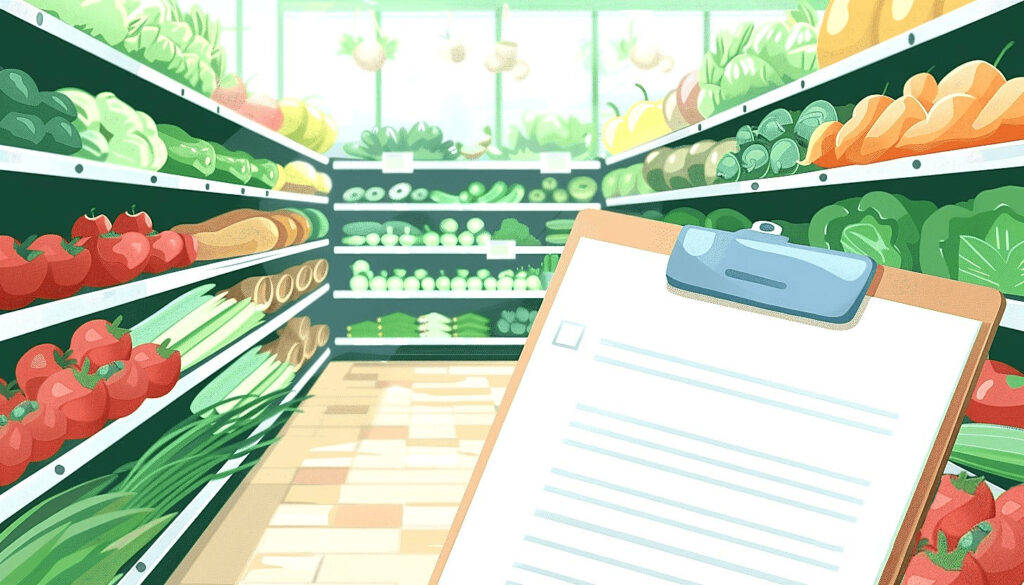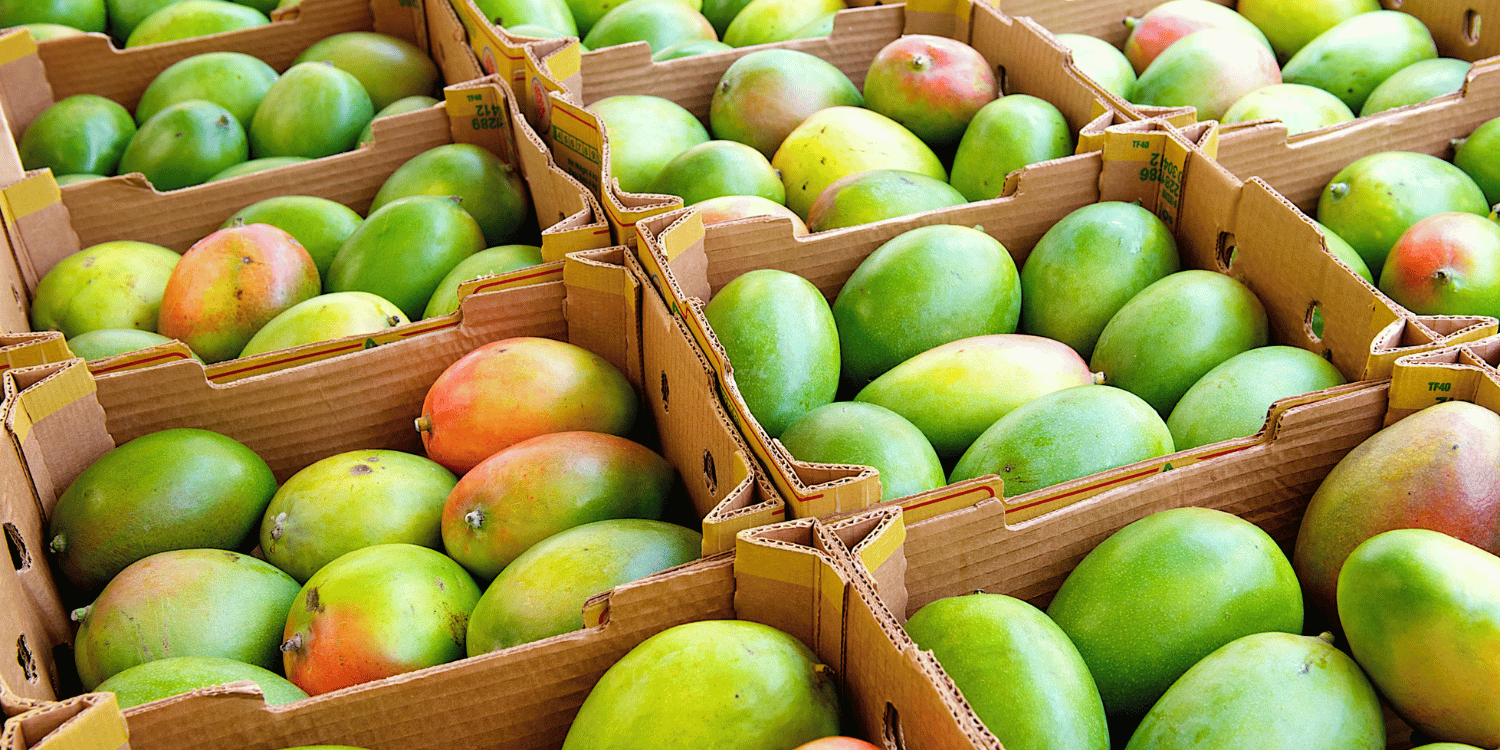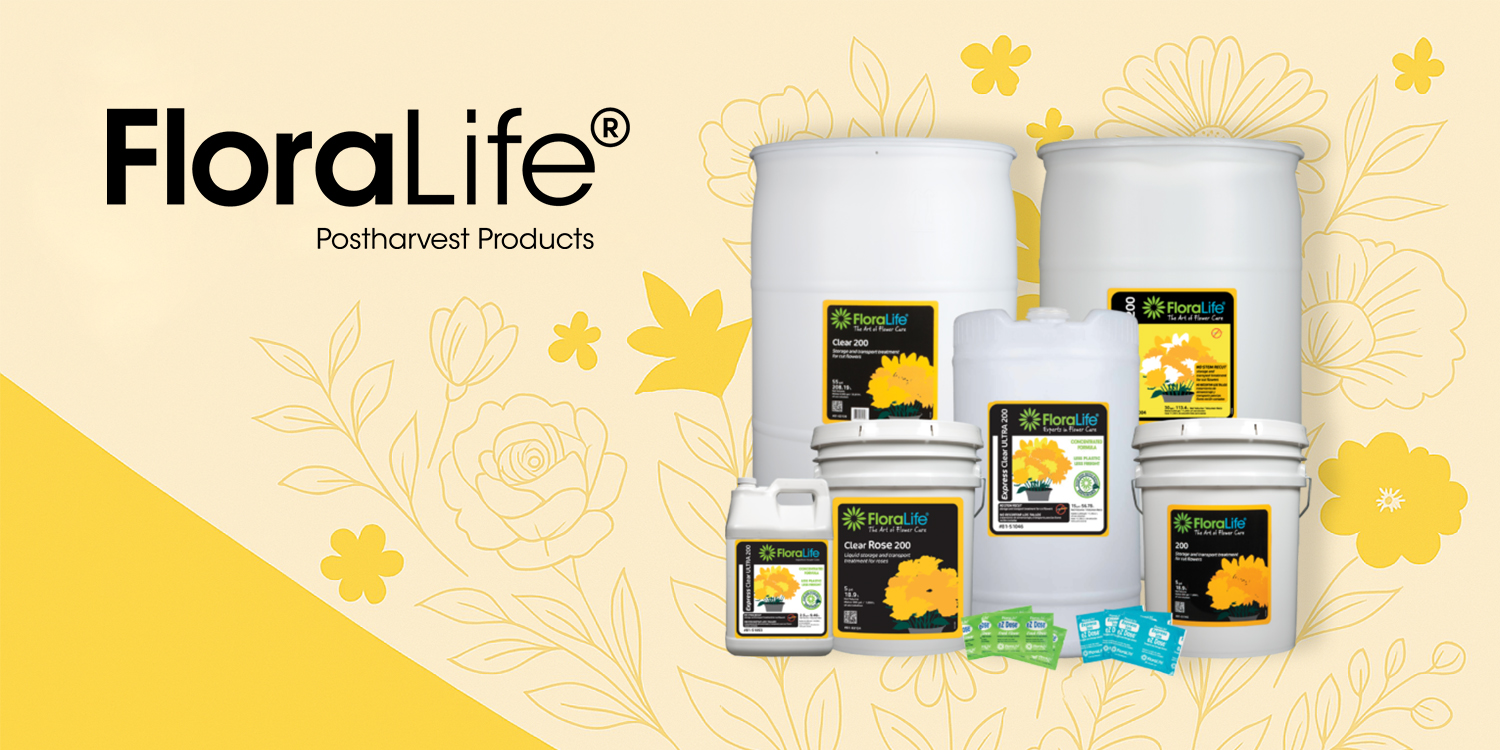Breaking into the supermarket industry is a significant step for any farmer or artisan food producer.
Securing shelf space is important to increase product visibility and encourage purchase by customers.
However, the process to achieving this can often be complex and challenging.
Understanding the right approach can make a significant difference in realizing this goal.
In this article, we will provide a comprehensive guide on how to achieve this.
Let’s dive into the required steps to make your product supermarket-ready.
- Grow high-quality fruits and vegetables for marketability.
- Obtain necessary permits to sell food products.
- Understand the requirements of potential retail partners.
- Develop clear, attractive, and legal product packaging.
- Use a competitive pricing model to enhance market presence.
In addition to these key takeaways, there’s a wealth of important insights that we’ll explore in the following sections.
This isn’t the full picture, your journey to get your produce on supermarket shelves involves more than just meeting retailers’ requirements and creating appealing packaging.
It is also crucial to understand the retail landscape, including how different supermarkets operate and what they look for in new products.
Thus, there is more to explore and learn, so please continue to follow along for more valuable information.
Contents [hide]
- Steps To Get Your Produce On Supermarket Shelves
- 1. Grow High-Quality, Marketable Fruits and Vegetables
- 2. Obtain Necessary Permits for Selling Food Products
- 3. Identify potential retailers and learn their requirements.
- 4. Create attractive, clear, and legal packaging
- 5. Develop a competitive pricing model.
- 6. Meet with Supermarket Buyers and Pitch Your Product
- 7. Provide samples for taste-testing if applicable.
- 8. Negotiate Contracts Including Delivery Schedules and Quantities
- 9. Deliver Your Produce in a Timely Manner
- 10. Regularly monitor and restock your product on shelves.
- The Bottom Line
Steps To Get Your Produce On Supermarket Shelves
1. Grow High-Quality, Marketable Fruits and Vegetables
In Short: Developing a methodology for growing high-quality, marketable fruits and vegetables assures favorable shelf space in supermarkets. Adhering to strict quality-control measures, maintaining consistency, understanding crop seasonality, pursuing organic certification, and employing diligent cultivation strategies are all crucial for yielding the best produce.
The primary step in successfully getting your produce on supermarket shelves is to develop a methodology to grow high-quality, marketable fruits and vegetables.
Supermarkets are likely to favor products of exceptional quality that will sell well amongst their customers.
This necessitates rigorous attention to your cultivation practices and a strict adherence to quality-control measures.
Consistency is important in the produce industry. The consistency of produce’s quality and size can indirectly represent your brand in the market,
The greater the consistency in your products, the more trust retailers will place in your brand.
Additionally, seasonality plays a crucial role in growing marketable fruits and vegetables.
For conventional produce growers, understanding the seasonality of your crops can bring about advantages that non-organic growers might not have.
This knowledge could be a strategic tool for establishing your brand’s uniqueness in a crowded marketplace.
Although it is not easy, striving for organic certification for your produce could be another factor to consider.
Such a certification signifies a reflection of the high standards you uphold in your farming practices.
The rise of health-conscious consumers may favor organic over conventional methods in our current market trend.
There are several tips you can adhere to in order to cultivate the best produce. Let’s discuss a few of them:
- Choose the right crops suitable for your farm’s climate and soil type.
- Implement regular checks for disease and pest infections.
- Ensure enough water supply but avoid over-watering.
- Utilize organic fertilizers in order to preserve soil fertility.
- Strictly follow the prescribed seasonal planting timelines for better yield.
Once the care and dedication are invested into growing produce of high quality, it will not take long for the fruits of your labor to pay off.
Therefore, it is important to take ample time in planning your cultivation processes and implementing them in order to guarantee the best outcomes.
After all, supermarkets and their customers are looking for utmost quality and freshness; offering such characteristics in your produce paves a path to a successful business venture.
2. Obtain Necessary Permits for Selling Food Products
In Short: Getting your fresh produce to market requires obtaining necessary permits, ensuring compliance with local, state, and federal food safety standards. Understanding these regulations, securing the necessary permits, and maintaining ongoing compliance are crucial steps for business success.
As you traverse the myriad steps involved in getting your fresh produce to supermarket shelves, a key area of focus is obtaining the necessary permits for selling food products.
Given that the food industry is stringently regulated, a permit, or more often several permits, is necessary to act as proof of compliance with various food safety and quality control standards.
It’s important to understand that the aim of these regulations is to protect the health and safety of the public, and hence they must be treated with utmost seriousness.
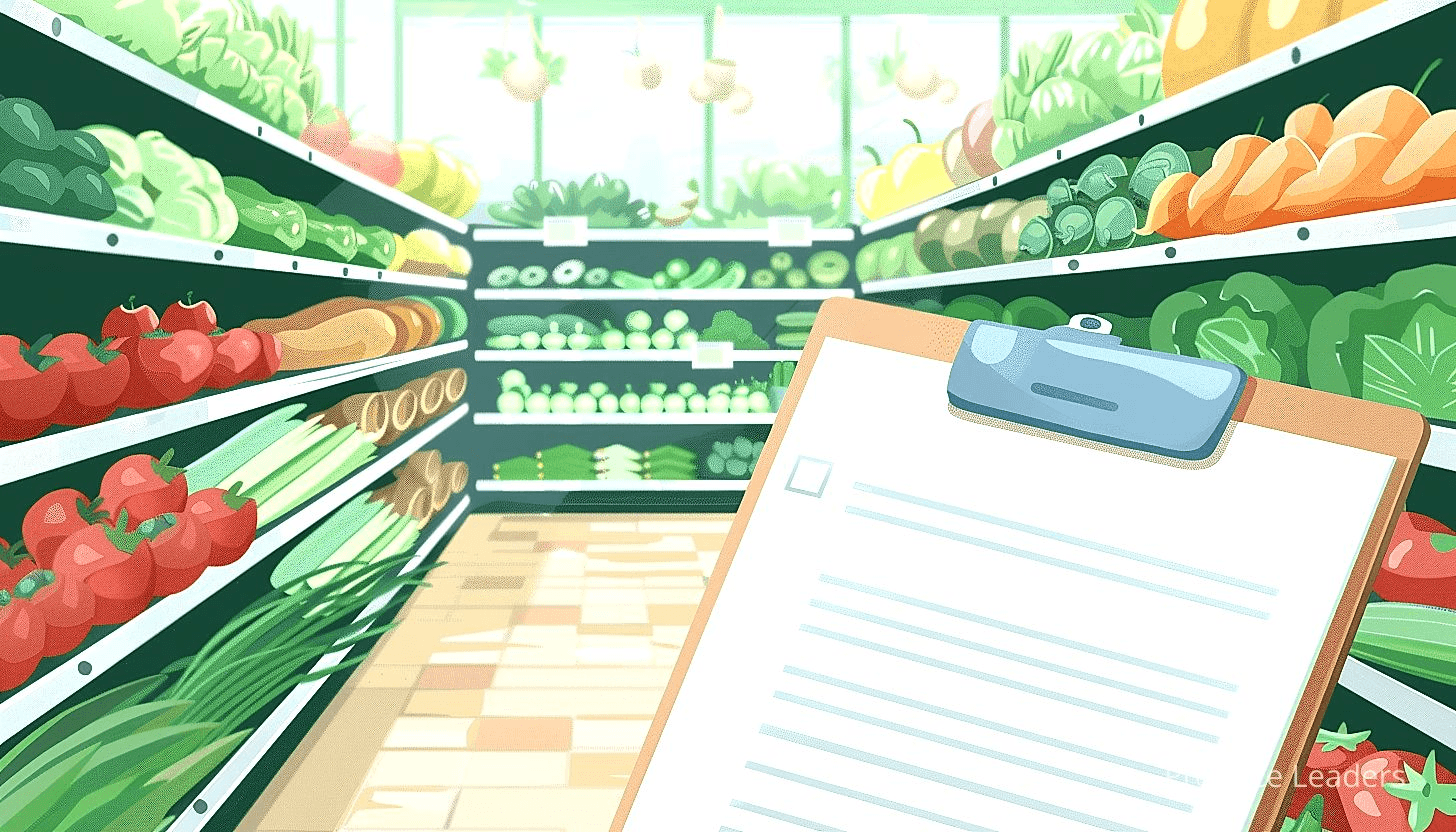
Understanding and staying compliant with local, state, and federal regulations can be challenging, but it is essential for the success and longevity of your business.
Working with local regulators can help you manage these regulations, as they are generally knowledgeable about the sort of licenses and permits required in a particular location.
Here are a few typical permits you might need to secure:
- Business Operation License: Your business may need an operation license to legally operate within your city or county.
- Seller’s Permit: Generally required for businesses selling goods, this permit allows you to collect sales tax on your items.
- Health Department Permit: This allows you to handle and sell food.
The specific permits required can vary greatly based on your location and the kind of produce you’re growing.
Prior to planting your first seed, it would be prudent to investigate and understand what permits are necessary to sell your intended produce, to avoid any unforeseen roadblocks and penalties.
Permits are not typically granted automatically once you apply. Your facilities and operations might be inspected and evaluated by the authorities to ensure they comply with the relevant standards and regulations.
It’s also important to realize that permits often come with a cost and the investment that a producer makes in these, can be a significant part of the initial production budget.
Pro Tip: Ensure you have all necessary permits for selling food products, complying with local, state and federal regulations, as this not only proof of compliance with food safety and quality control standards, but is also essential for the success and longevity of your business.
Also, keep in mind that permit compliance is not a one-time activity – regular audits and renewals may be part of this process.
The key to successfully navigating this process lies in careful planning, diligent preparation, and a willingness to work cooperatively with regulatory agencies. These steps can pave the way for a smooth and successful journey in getting your top-notch produce onto supermarket shelves.
3. Identify potential retailers and learn their requirements.
In Short: Identifying potential suitable retailers and understanding their specific requirements is essential for getting your product onto supermarket shelves. Ensuring your produce is high quality and meets the targeted retailer’s standards and vision, may involve various adjustments to product, packaging, or pricing.
The identification of potential retailers is the crucial next step in getting your produce on supermarket shelves.
Due to the uniqueness of every supermarket, fully grasping their specific requirements is paramount because it can be a decisive factor in whether your produce gets accepted or not.
Having a concrete understanding of their requirements also helps streamline the necessary adjustment processes you might need to put in place to meet their standards.
Understanding retailer requirements, often, involves research and could mean anything from visiting the supermarket physically to study their existing produce section, or having scheduled meetings with the store’s buyer/manager.
It could also involve online research on the supermarket’s website or even engaging in discussions on online forums and customer review sites, to gain insight into what makes for a successful product on their shelves; the goal is to gather as much useful information as you can.
Given the numerous potentials, presenting the retailers you should consider in a list will help organize the information effectively:
- Think about retail chains that offer produce comparable to yours in terms of quality and pricing.
- Consider local, independent supermarkets because they often prioritize local products, and they can provide a great jumping-off point for your product.
- Take note of the niche markets, like organic or health food stores that are increasingly becoming popular and can be a perfect match for your produce.
- Factor in supermarkets that focus on specific communities or cultures, where items that cater to that specific demographic are prioritized.
Once you have your list, it’s then paramount to learn each targeted retailer’s specific requirements.
Some establishments have very specific rules that can affect the packaging, pricing, labelling, and even the delivery schedule of your produce.
A rule of thumb is to ensure your produce is high-quality, always fresh and integrates well into the specific retailer’s overall vision.
Do not be discouraged if your initial attempt does not yield the expected results. It’s important to remember, persistence and flexibility are key: it may entail adjusting your product, packaging, or pricing several times to meet the requirements of your targeted retailer.
Understanding retail requirements might also involve analyzing your competition on their shelves to understand the sort of products that are thriving in that space.
I want you to remember, understanding retail requirements is not a one-size-fits-all task, it requires patience, persistence and the ability to adjust to varying requirements to ensure your product finally gets that desired shelf space.
With all these, it’s safe to assert that identifying potential retailers and comprehensively getting to know their requirements is a crucial pedestal for your goal of getting your ready-for-market produces on supermarket shelves.
4. Create attractive, clear, and legal packaging
In Short: Understanding and adhering to food safety rules, packaging regulations and labeling requirements is crucial for a legally compliant agri-business. Your packaging should not only assure quality and freshness but also embody your brand story, ecological responsibility, functionality, consumer engagement, and attraction through innovative designs, color strategy, graphics, and potential use of QR codes.
Before crowd-gazing visuals are even designed, it’s important to properly understand the food safety rules and regulations that govern the packaging of fresh produce.
Identifying and adhering to these legal requirements will prevent any unwelcome legal issues that could perturb or halt your business operations.
Analyses of agri-food packaging regulation both at the local level and in the target market locality are necessary to ensure compliance with safety standards and labelling requirements.
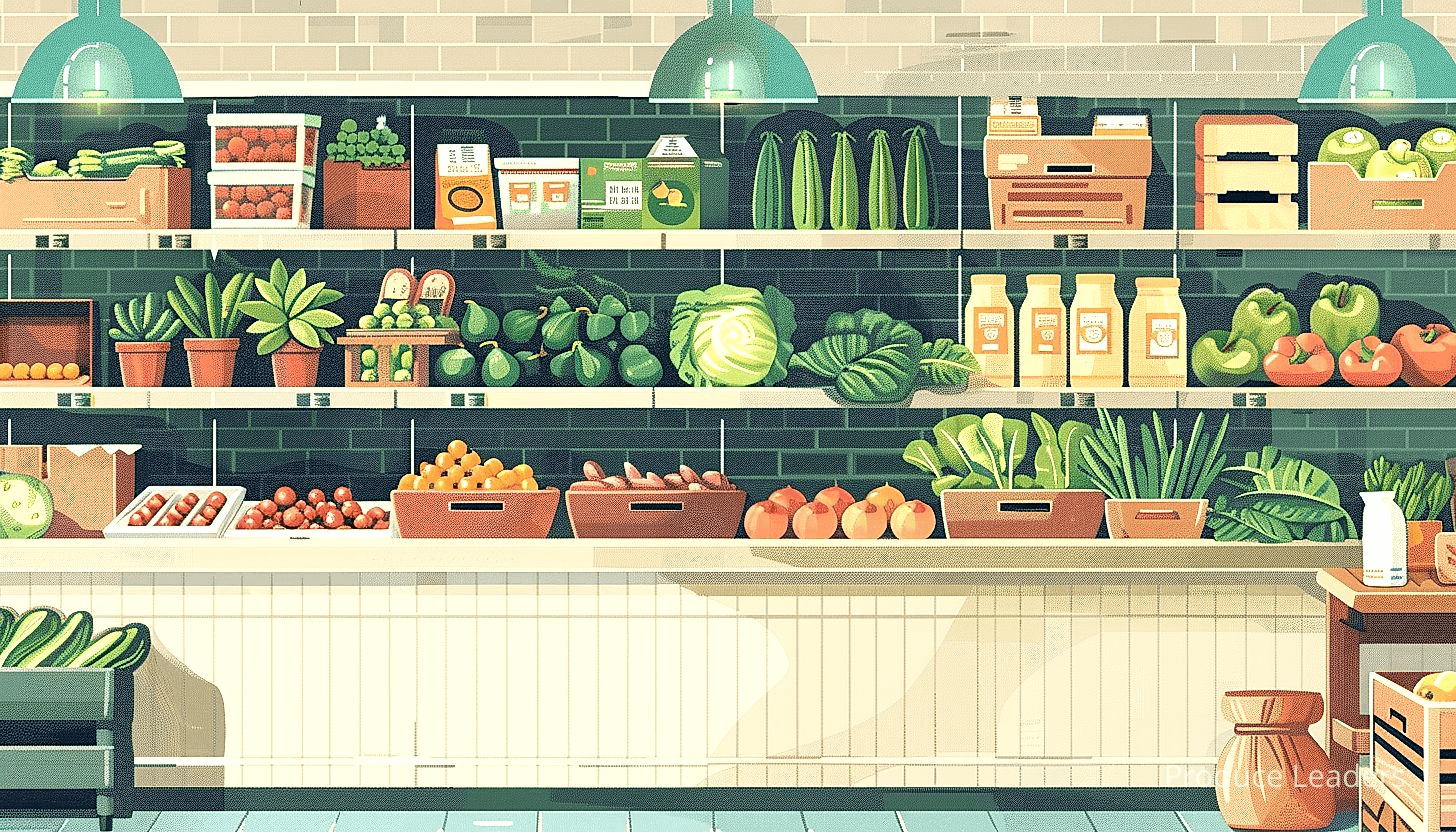
Given the stringent regulations, professional advice from seasoned agri-business owners or legal experts on food packaging may prove invaluable.
Quality is of the essence in the packaging of perishable produce. Investing in appropriate, robust, fresh-keeping packaging is crucial to ensure that the items reach the supermarket shelves in their prime state.
Following regulations and ensuring quality, the stage is set to infuse creativity and branding into the product’s packaging. Attractive packaging can indeed set your produce apart from the myriad of offerings that line supermarket shelves.
Next, we’ll be taking a look at a few important aspects to consider when designing your packaging:
- The package design should carefully integrate and communicate your brand’s story and values.
- Ensure your packaging is ecologically responsible, considering the increasing importance customers place on sustainable practices.
- Packaging should be functional yet innovative, easy to open, use, and dispose of, yet unique enough to attract the consumer’s eye.
- It should provide clear product information — what the produce is, the ingredients, origin, best before dates, and more.
Another critical component is using the right colour code. Colour not only attracts customers but also conveys particular attributes of your produce. A strategy in the use of colour can make your produce more appealing to the target market.
An effective way would be to use colours that are synonymous with freshness, like green, or to use colours that depict the actual produce inside the package.
Images and graphics can also play a significant role in making the packaging attractive. They should be functional and aligned with the brand story, but also compelling enough to draw the customer’s attention.
Important: Understanding and adhering to food safety rules and regulations that govern the packaging of fresh produce is vital to prevent any unwelcome legal issues that could perturb or halt your business operations, and consulting professional advice on this matter may prove invaluable.
Incorporating a quick response (QR) code to take interested buyers to your website or to provide additional information can also propel your product in modern markets and contribute to a greater customer engagement.
In the end, your packaging should be a harmonious meld of legal compliance, quality assurance, product attractiveness, ecological responsibility and consumer satisfaction.
5. Develop a competitive pricing model.
In Short: Creating a competitive pricing model is not just about covering expenses, it involves strategic understanding of the market, competitor strategy, consumer preferences and maintaining a favourable profit margin. Flexibility and adaptation to market trends and changes are crucial, and the pricing should reflect the value your product provides to its customers.
According to the fifth step in the path to reaching supermarket shelves with your produce, it’s essential to develop a competitive pricing model.
Establishing a pricing model is not simply about setting a price that scales with your expenses, it also implicates a strategic understanding of your market conditions and competitors’ strategy.
A good pricing strategy is one of the most effective ways to increase revenues and is much more cost-effective than focusing only on increases in production.
Realistic pricing is primarily based on the quality and cost of production of your product.
Your price should cover the cost of production and allow you to achieve a favourable profit margin.
In addition, factoring in customer expectations and perceptions of your product’s value is an important element of setting the right price.
A good look at competitor prices will offer an insight into what price consumers are willing to pay for similar products.
Now, this is where we will discuss the primary elements to consider when developing a competitive pricing model.
- One must understand their own cost of production. This includes direct and indirect costs associated with producing your goods.
- Next, consider your desired profit margin. This should be a balance between your personal financial goals and what is reasonable within your market.
- Insights into market trends and consumer preferences are also crucial when pricing. This could mean seasonal trends or general consumer trends towards organic or locally produced goods.
- Lastly, keep a close eye on competitor pricing. Knowing what similar products charge will help you price competitively, ensuring you aren’t pricing too high or too low.
While considering these factors, it’s also crucial to remain flexible in your pricing strategy.
Market conditions, costs of production, customer preferences – all these elements can change quickly.
Being prepared to adapt your pricing in response to these changes can help maintain your competitiveness and income in the long run.
Pro Tip: To develop a competitive pricing model for your product, consider factors such as the cost of production, desired profit margin, market trends, and competitor pricing, whilst being prepared to adapt to rapid changes in these variables.
In all things, the most important aspect to remember is that your pricing should reflect the value that your product provides to your customers.
This involves making a clear case as to why your produce deserves its price point because, in the end, the perception of value is what truly drives consumers to choose your product over another.
6. Meet with Supermarket Buyers and Pitch Your Product
In Short: Pitching your produce to supermarket buyers involves presenting your product’s unique features, the value it brings to supermarkets, your proactive stock management strategy, and a fair pricing strategy. Building relationships, understanding the retailers’ needs and demonstrating your commitment to quality are key to getting your product on the shelves.
Having your produce featured on supermarket shelves starts with a well-crafted pitch. It’s the perfect opportunity to present your product in a way that’s compelling and convincing, and to express your vegetables and fruits’ value.
The pitch begins with product introduction. It’s essential to clearly articulate what your product is and its features that distinguish it from other products on the shelves. From your interesting origin story to the organic nature of your produce, this is your platform to make your product exciting and desirable.
The next aspect of your pitch is what your product offers to the supermarket. Supermarket buyers are keen on stocking products that not only sell well but also offer value to the supermarket. Thus, point out your products’ attributes such as attractive packaging, long shelf life, or high nutrition content, which contribute positively to the retailer’s image and profits.
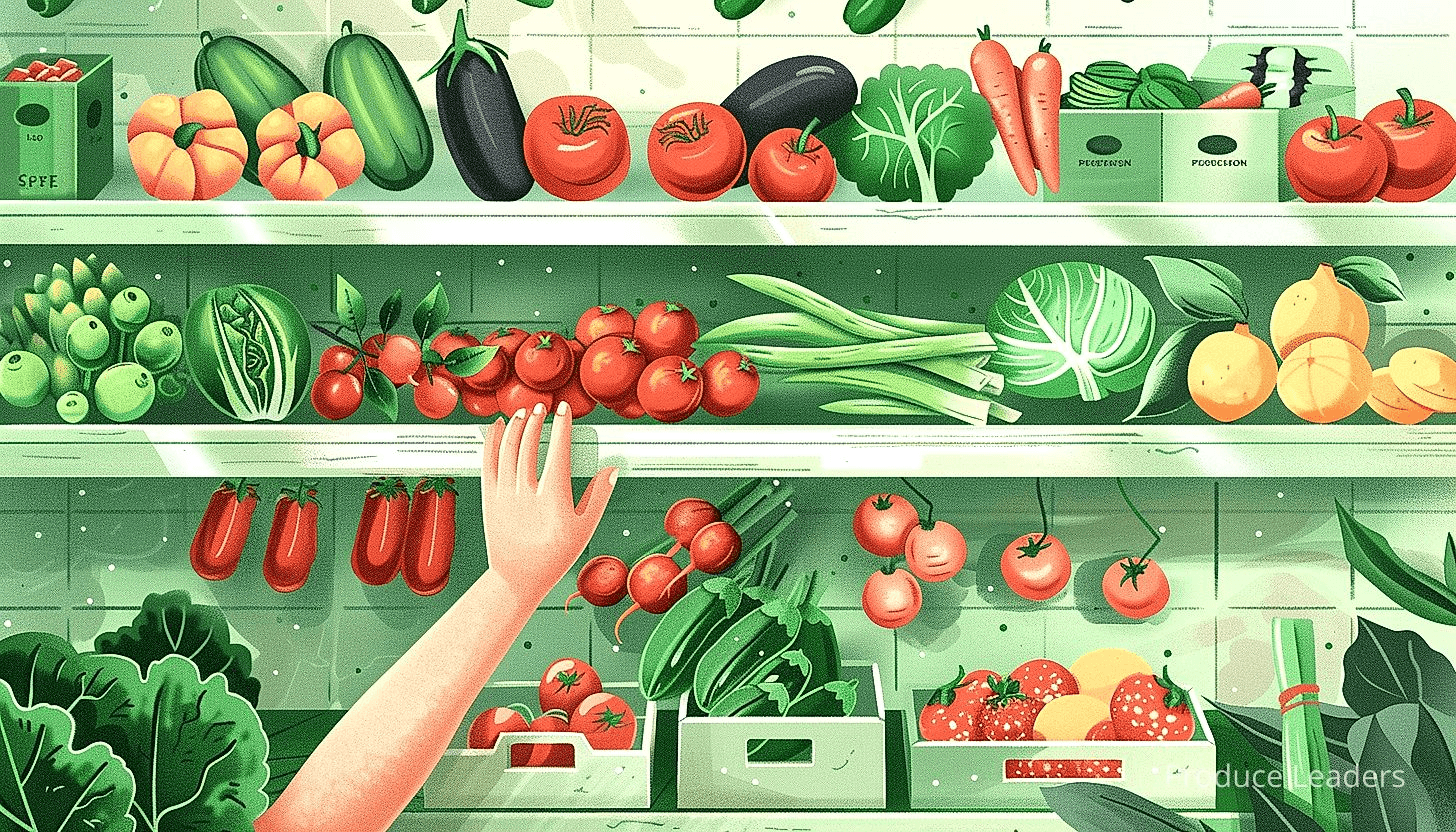
The close monitoring and restocking aspect should also be underscored during your pitch. Express your commitment to manage stocks proactively to meet the needs and wants of the supermarket’s clientele. Also, draw attention to your readiness to provide after-sales service and addressing any product complaints or queries.
It’s important to understand the supermarket’s needs and address them in your pitch. It’s not about convincing them to stock your product, but showing them how stocking your product meets their goals and targets.
The price point of your product is a critical discussion during the pitch. Maintain clear and transparent about your costs and how they have influenced your final prices. Make sure to relate your price to the superior quality of your produce and the benefits it offers.
Meeting with supermarket buyers isn’t simply about pitching your product. It’s also an avenue to establish a relationship and open communication lines. Building compelling relationships can increase the chances of your product getting to the shelves and staying there in the long run.
Here’s a recap of the critical points to observe and emphasize during your pitch:
- The distinctiveness of your product
- The value proposition to the supermarket
- Your commitment to stock management
- Understanding the supermarket’s needs
- Setting a fair and advantageous price point
- Creating relationships with the supermarket buyers
It’s important to remember, in business, it’s not always about the product but about the people. Engage supermarket buyers on a professional yet personal level, and approach the meeting with confidence. Show that you believe in your product and its potential to be a top-seller. You’ve to make them believe it too.
Important: To successfully secure your product’s place on supermarket shelves, you need to craft a compelling pitch that highlights not only the distinctiveness and value of your product, but also shows your understanding of the supermarket’s needs, your commitment to stock management, and your readiness to establish a professional relationship with the supermarket buyers.
You also need to demonstrate your commitment to delivering quality consistently. Supermarket buyers want to know they can trust you to maintain the standard for the long haul. Assure them of your constant pursuit of quality and your intention to deliver nothing short of excellence.
Finally, practice your pitch. A well-rehearsed pitch goes a long way, helping you pour out your passion seamlessly, representing your product in the best way, and confidently facing your audience which, in this case, are the supermarket buyers.
7. Provide samples for taste-testing if applicable.
In Short: Providing taste-testing samples is an effective way to increase commercial interest in your produce, allowing customers to experience its quality and taste. However, samples must be fresh and visually appealing, of adequate quantity, and comply with any local food safety guidelines.
One of the effectual ways to increase the commercial interest in your produce is to provide taste-testing samples when possible.
It helps potential customers understand the quality and taste of your product, which undoubtedly plays a crucial role in the buyer’s decision-making process.
This may be particularly relevant if your produce is a unique and not universally known variety
Before diving into this step, here are a few essential factors to consider:
- You need to ensure that the sample is fresh and represents the best of your produce.
- The sample must also be visually appealing to capture the attention of potential buyers.
- It helps when you provide an adequate quantity of samples to avoid running out.
Setting up a taste-testing stand in a supermarket can be an excellent platform for handing over your samples.
In this way, potential customers have the chance to directly experience the taste and quality of your produce before making a purchase.
This could be a pivotal moment where they decide to buy your fruit or vegetable, based on their direct experience with the product.
Providing samples for taste-testing also opens up an avenue for direct feedback.
This is invaluable as it allows you to understand what customers think about your produce.
Based on the feedback received, you can make necessary improvements to your product or highlight its unique selling points (USPs).
Please note, depending on your location and the place of sale, there may be certain legalities that you may need to address before you could provide samples for taste-testing.
Therefore, getting the necessary permits and adhering to the local and federal food safety guidelines is imperative.
In the grand scheme of placing your produce on supermarket shelves, sampling plays a significant role.
It not only helps promote your product but also aids in creating a rapport with your potential customers.
Lastly, while providing samples for taste-testing, remember to prepare for any questions that the consumers might have about your farming practices or the origin of your produce.
A transparent and convincing response may pave the way for your produce’s enhanced marketability and increased presence on supermarket shelves.
8. Negotiate Contracts Including Delivery Schedules and Quantities
In Short: Negotiating contracts for supermarket produce involves clear and flexible agreements on delivery schedules and quantities. This process, aimed at a mutually beneficial deal, requires open communication, clear quality standards, understanding of market conditions, and all agreed terms documented in a contract.
As you’re navigating the process of getting your produce placed on supermarket shelves, one of the most crucial steps involves negotiating and finalizing contracts. These agreements should prominently contain details regarding delivery schedules and the specific quantities of each produce to be delivered.
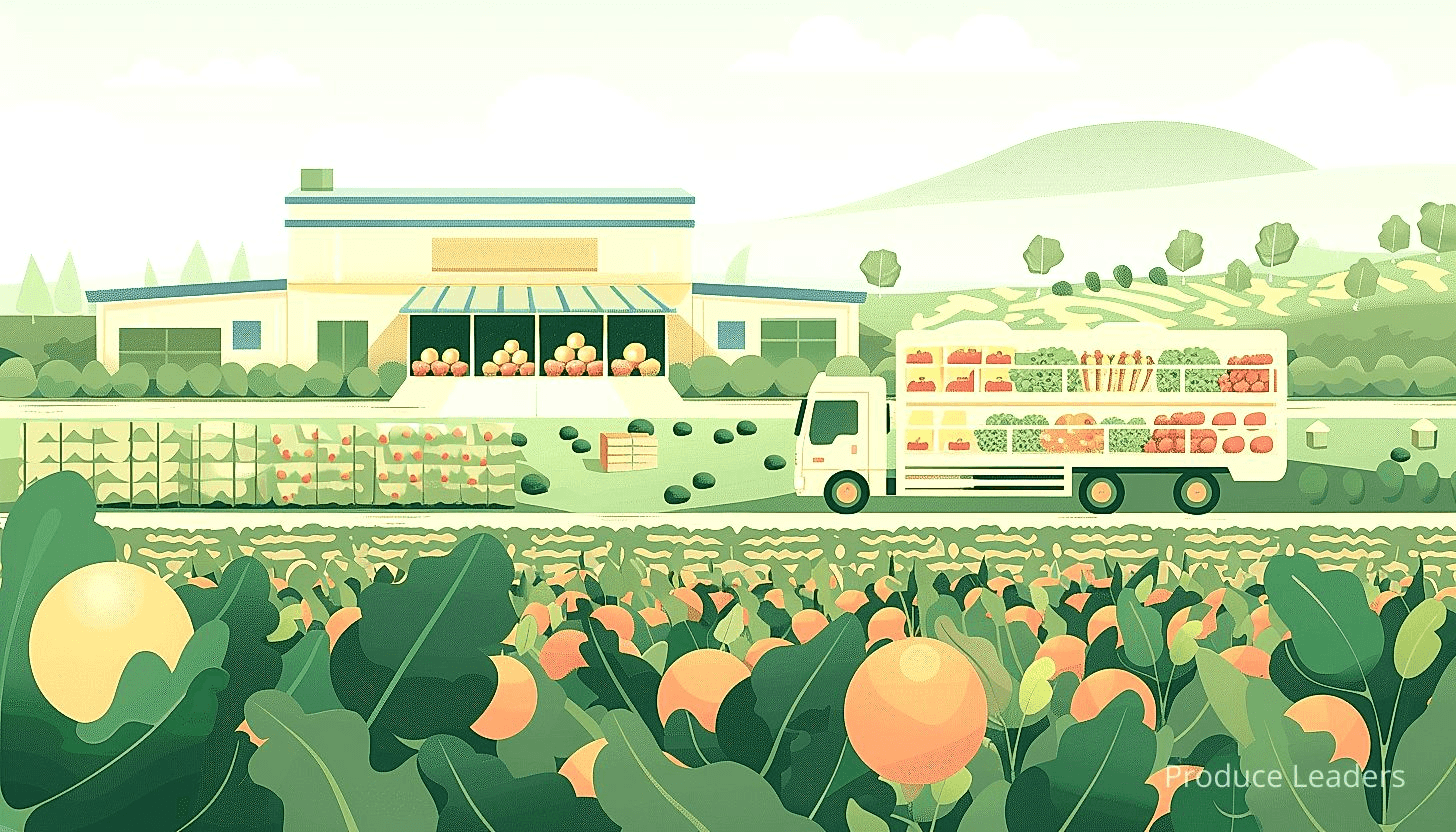
The negotiation phase of this process can be challenging, requiring both a keen understanding of your own business’s capabilities and a firm sense of the needs and expectations of the market you’re entering. Be sure to remember that the goal here isn’t simply to get a contract, but to get a contract that is beneficial and sustainable for both parties involved.
While negotiating, it’s important to be assertive about your requirements and what you can deliver. However, flexibility is equally crucial. The supermarket industry is notorious for its tight schedules and slim margins. Recognizing the importance of being able to adjust in response to the needs of the retailer will make you a more attractive business partner.
The following points can guide you on some key areas to focus on while negotiating contracts. Please note, sticking to these guidelines can enhance your chances of sealing a favorable deal.
- Pricing: The produce’s pricing should be economically sustainable for you, while also competitive in the retailer’s market.
- Delivery schedules: Standardizing a consistent delivery schedule is essential. Schedules should be realistic, reflecting your ability to harvest, package, and transport the produce in a timely manner.
- Minimum and maximum quantities: The contract should specify the minimum and maximum quantities that can be supplied to avoid any future disagreements.
- Quality standards: It’s essential to agree upon clear quality standards for your produce, to maintain trust and satisfaction with the retailer.
Being upfront regarding the delivery schedules and quantities right from the start is crucial. Setting clear and realistic expectations can prevent misunderstandings, disappointment, and even contractual breaches down the line. It’s better to be conservative in the beginning and increase quantities gradually as your operation becomes more efficient and your relationship with the retailer strengthens.
Moreover, to successfully negotiate contracts, it’s important to be aware of the power of effective communication. This not only involves relaying your expectations and requirements clearly but also involves actively listening to the retailer’s needs. By doing so, you can establish a mutually beneficial business relationship, rather than engaging in a zero-sum game.
Another important consideration while finalizing contracts is the clause relating to changes in market conditions. In an industry as volatile as agri-business, factors outside of your control can influence your ability to deliver on the scheduled quantities. A clause that allows for an open dialogue and renegotiation in these circumstances is crucial for sustained cooperation between you and the supermarket.
Pro Tip: A pro tip for negotiating contracts in the supermarket industry is to ensure agreements clearly outline delivery schedules and quantities, utilize effective communication, and to aim for a favorable deal that’s beneficial and sustainable for both parties; remember, flexibility and readiness to adjust to retailer’s needs are key.
Lastly, while it may seem obvious, it’s imperative to get all agreed terms and conditions into the written contract. Keeping everything documented helps to avoid disagreements and protects both parties in the event of a dispute. A well-structured and transparent contract is the ultimate aim of this phase, guiding not only the initial transaction but the ongoing relationship between you and the supermarket.
9. Deliver Your Produce in a Timely Manner
In Short: Timely and reliable delivery of your products is crucial to successful business partnerships with supermarkets as inconsistencies could result in a loss of business. Utilize strategies such as investing in robust transportation, efficient route planning, possibly outsourcing, and maintaining sufficient stock, and ensure open communication with the retailers to establish trust.
Regardless of how high-quality and competitively priced your produce might be, none of this will matter if you are not able to consistently and reliably deliver your products on time.
The supermarket business is one that is heavily dependent on regular and punctual restocking to ensure that products are always available for customers.
Failure to abide by delivery schedules can create significant inconvenience for retailers and ultimately may result in a loss of business.
As a supplier, the onus is on you to ensure that your delivery process is both efficient and reliable.
You might have the best product in the market, but if it’s not on the shelves when customers need it, sales won’t reflect the quality of your items.
There are several strategies to ensure that your produce is always delivered on time.
But let’s highlight some of the most effective ones:
- Invest in reliable transportation: Having dependable vehicles that can cope with the demands of regular deliveries is crucial.
- Plan your routes: Efficient route planning not only saves time but also reduces fuel costs, which could improve your bottom line.
- Consider outsourcing: If delivering produce is taking up more of your time than growing it, it might be time to outsource transportation to more experienced hands.
- Ensure you have sufficient stock: Keep an inventory of what you have in hand to align with what the supermarkets need so you don’t end up making empty promises.
It’s also important to communicate openly with the supermarket about your delivery schedule.
This not only includes when you will be making your deliveries, but any potential delays that could impact your schedule.
Remember that transparency is crucial in building trust between you and your retailer.
Given the high competition in supermarket shelves, you cannot afford to be lax on the timeliness of your delivery.
Severe delays or inconsistencies in your product delivery can easily mean your product being replaced by that of a competitor.
To ensure a successful partnership with supermarkets, it’s paramount to establish yourself as a reliable, punctual provider.
Whether you are just starting out or looking to expand your current operations, the delivery aspect of your business is just as crucial as cultivation.
When done properly, timely delivery of produce can set the foundation for durable relationships with retailers and help ensure your long-term success in the industry.
10. Regularly monitor and restock your product on shelves.
In Short: Regularly monitoring and restocking your product on shelves is essential to maintain product freshness and availability, boost sales, manage quality control, and build a strong relationship with supermarket management. This commitment towards maintaining your product’s presence on supermarket shelves not only enhances your brand image but also assures customers and supermarkets of your dedication to deliver high-quality products.
After securing a space for your produce on supermarket shelves, the next important step is to consistently monitor and restock your products. This process is crucial to maintaining the freshness of your goods, a key factor in attracting and retaining consumers.
Your vigilance in restocking shelves is paramount to your business’s success. An empty shelf can become an immediate sales dilemma.
By regularly checking your product display, you ensure that potential customers always have easy access to your produce. This accessibility translates to more sales and potentially higher profit margins.
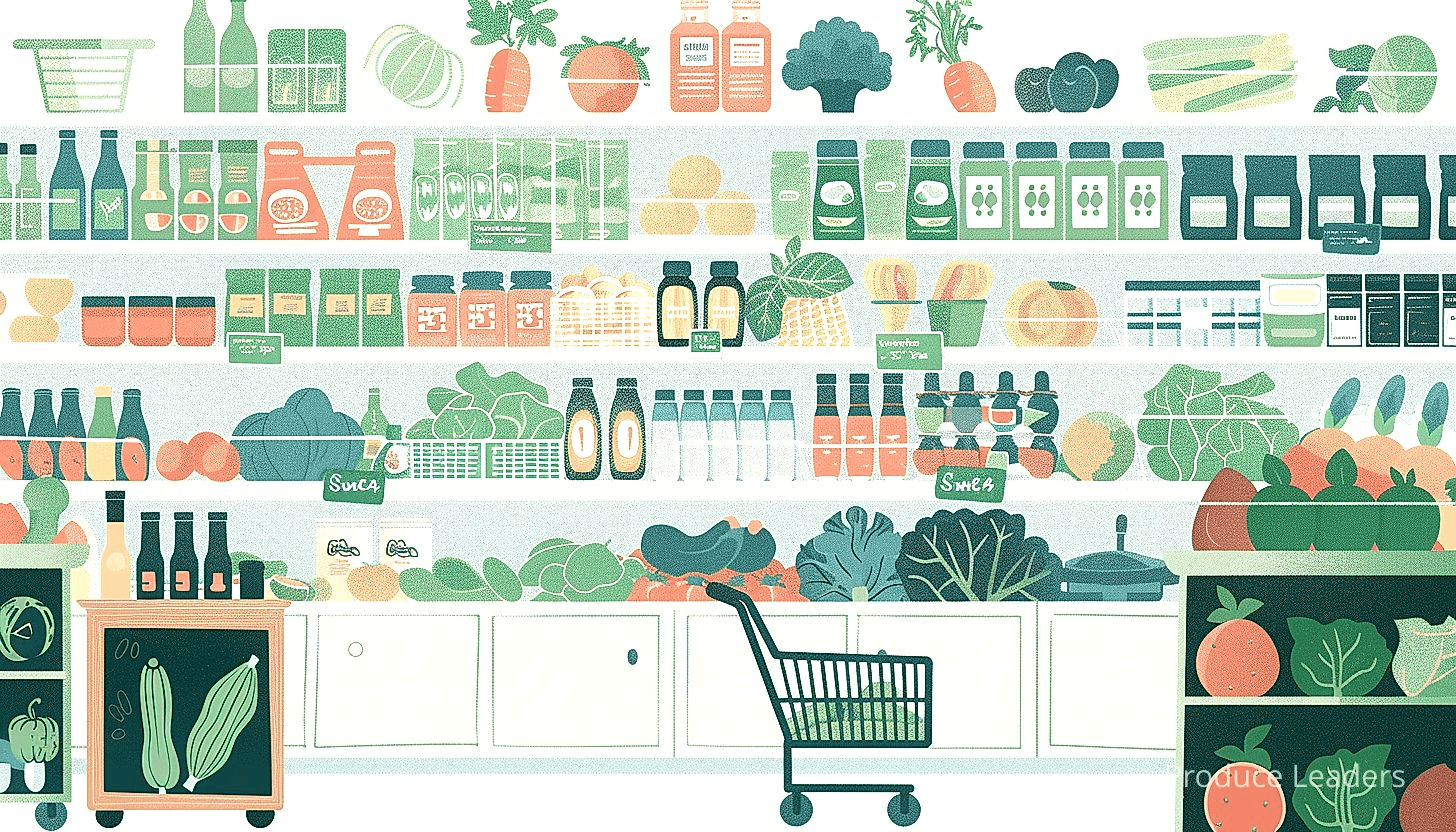
However, monitoring and restocking is not solely about ensuring availability. This practice also gives you the chance to inspect all of your produce on the shelf.
You need to ensure product quality is consistent. Imagine the damage to your reputation if a customer purchases rotten fruit from your line of products.
It’s not just about customer satisfaction either. Having quality control measures in place is a demand of most supermarkets as a way to maintain their own reputation.
Let’s tell you more about what accurately monitoring and restocking entails :
- Regular Visits: Plan regular visits to the supermarkets selling your produce. These should be timedbased on the shelf life of your goods to ensure freshness at all times.
- Inspect the Display: Check your product display. Ensure it’s attractive, clean, and organized.
- Rotation: Implement a rotation system, commonly known as ‘first in, first out’. This ensures older stock is sold before the new stock.
- Quality Control: Inspect all logs for any signs of damage, spoilage, or poor quality. Remove any that don’t meet the standards immediately.
Now, maintaining communication with the supermarket management is also crucial in this process.
Doing so will help you promptly address any issues, like having to restock more quickly due to higher than expected demand. Alternatively, you may need to slow down deliveries if products are not selling as expected.
Developing a strong relationship with the supermarket’s management will greatly enhance the success of your enterprise.
Last but not least, remember that this step is not a one-off task. Your constant attention and dedication to this process is what will keep your produce moving off the shelves and into consumer’s baskets.
Adjust your approach as necessary and always strive to improve. This is an ongoing process in maintaining your products’ presence on supermarket shelves.
Through effective monitoring and restocking process, you are not just reinforcing your brand’s presence but you are also showing supermarkets and customers that you are committed to delivering a high-quality product.
The Bottom Line
Getting your produce on supermarket shelves can be a challenging process, yet simultaneously rewarding once achieved.
The steps we’ve discussed help establish relationships with retailers, ensure regulatory compliance, and perfect packaging and pricing to make your produce appealing to customers.
An understanding of the marketplace, coupled with a solid marketing strategy, can significantly increase the chances of your produce being picked up by supermarkets.
Though the journey might be strenuous, your perseverance can lead to the significant success of your produce at supermarkets.
I want you to remember, success won’t happen overnight but maintaining consistency, quality, and relevance in your produce offerings can get your products onto supermarket shelves and into consumers’ homes.

